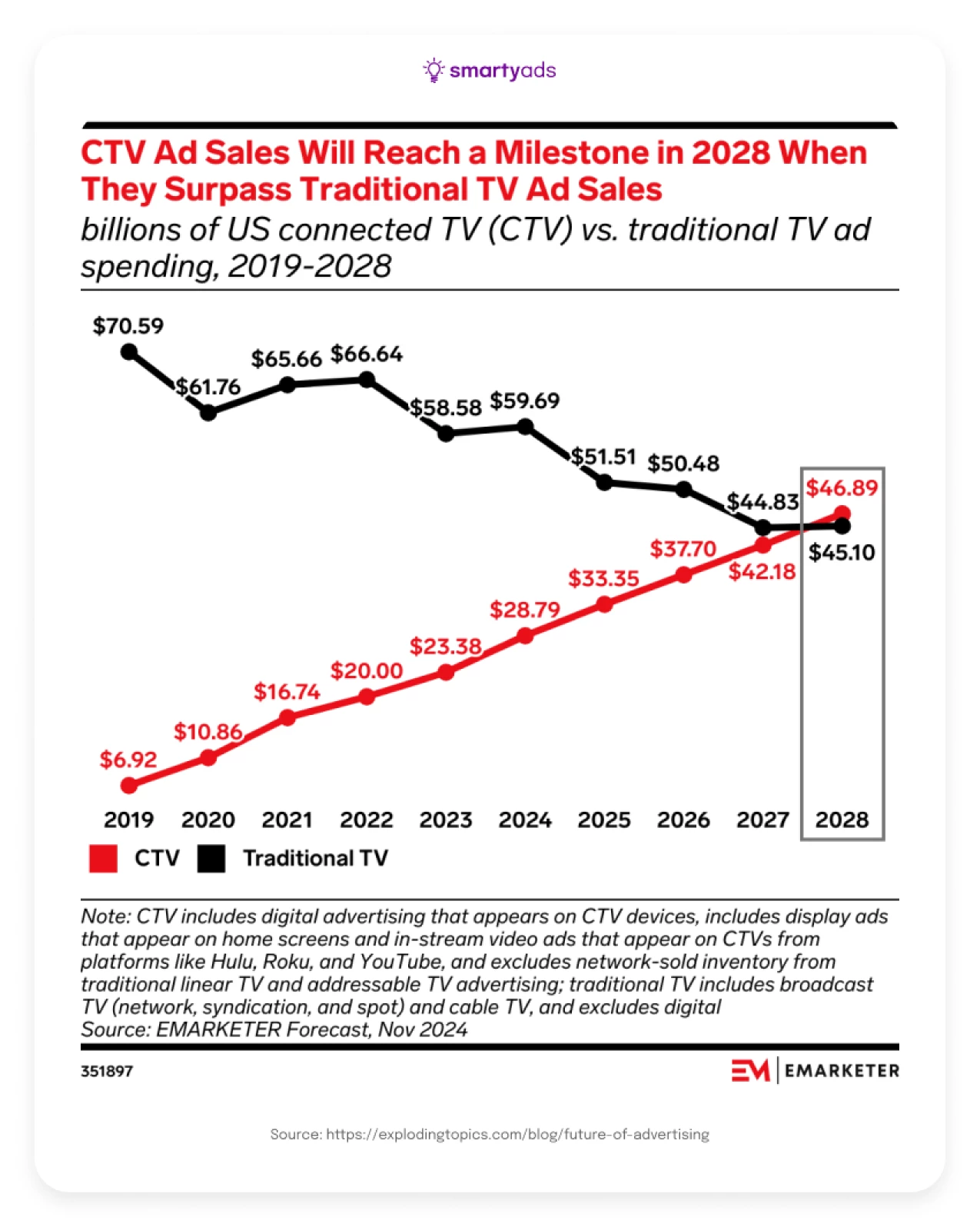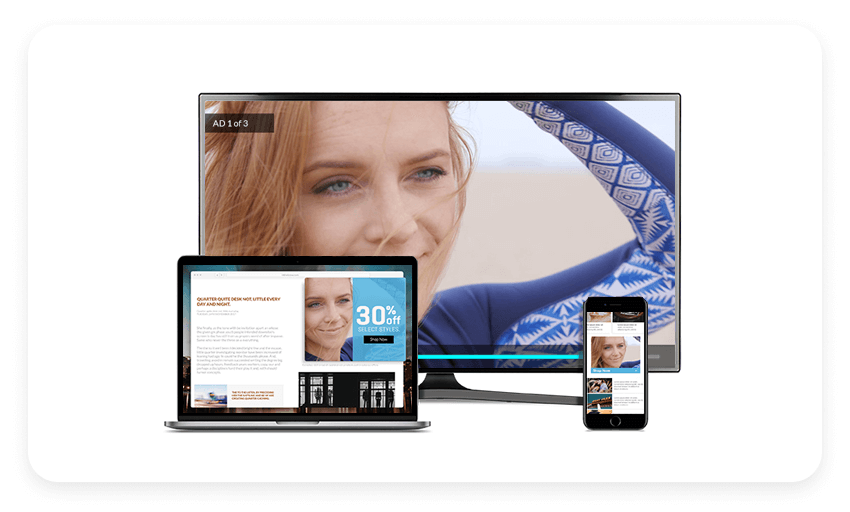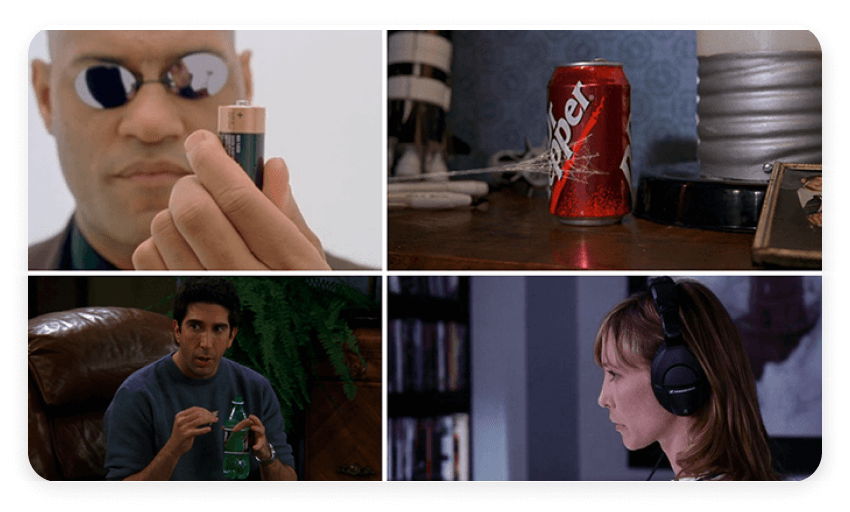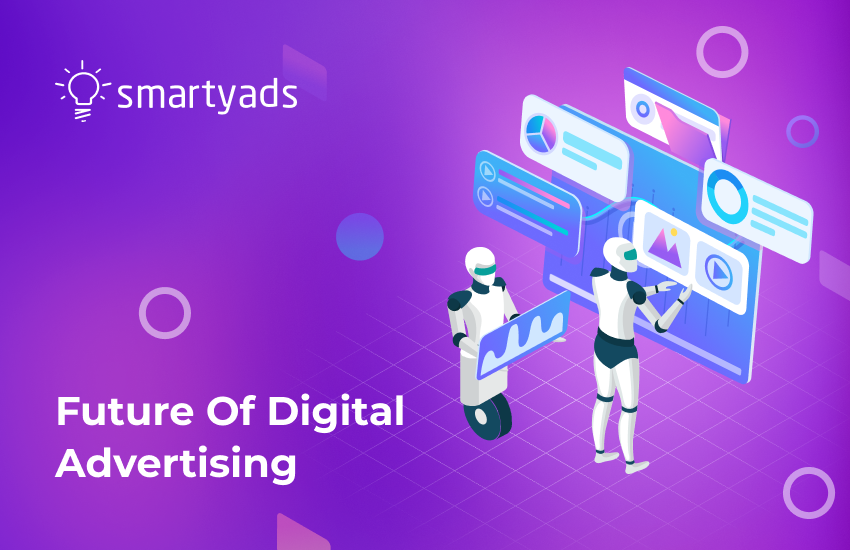With the new year coming, it's time for all digital marketers to update their marketing strategies. For small businesses, digital marketing and advertising is an opportunity to make a competitive edge in the marketplace.
Like many before it, this year is likely to bring us many surprises, but there are some fairly obvious trends that we will discuss in this article.
To help you prepare your strategy for this year, we've created a list of the most anticipated transformations in digital advertising. Let’s see what the future of advertising and marketing will look like.

Artificial intelligence (AI) and machine learning (ML) in advertising
Artificial intelligence and machine learning are revolutionizing the world. It’s undoubtedly the future of advertising industry. In fact, as you can see on the chart down below, almost 25% of tasks can be easily automated by AI to make our lives easier and businesses more efficient.
Regarding the digital ad scene, AI and ML keep driving innovations and creating opportunities for more personalized and efficient digital campaigns. These technologies enable advertisers to leverage vast amounts of data, optimize strategies in real time, and enhance customer experiences.
.webp)
Power of predictive analytics
Predictive analytics which AI and ML power is absolutely necessary in the field of marketing and advertising. It’s integral to make predictions and forecast future business trends and consumer behavior.
By analyzing historical data and identifying patterns, within seconds, AI can analyze historical data and identify patterns to predict possible actions. This allows brands to anticipate their audience needs to optimize strategies and deliver highly targeted campaigns.
Moreover, it’s a key to better allocating budgets as well. Predictive analytics reduces ad spend waste and enhances overall campaign performance.
Chatbots and virtual assistants for customer engagement
Another AI-powered technology that will be widely adopted in advertising in 2025 is chatbots and virtual assistants. These are excellent tools for customer interaction as they provide instant responses to queries, can guide users through the purchasing process, and even recommend products based on their preferences.
For advertisers, integrating chatbot technology into campaigns opens a unique opportunity to engage audiences and collect valuable insights about their interests.
Content from AI
After the trend with avatars and images created by artificial intelligence swept across the planet, it has actualized the conversation about creating high-quality content for digital marketing from AI. At a minimum, AI is doing a good job crafting interesting creatives. Also, many publications are using it to broadcast relevant information. For example, the Washington Post uses AI to publish the results of sports games.
So far, the abilities of neural networks are not enough to write a large informational article that would help with search engine optimization. However, we can think about using AI to create marketing creatives. There is a chance that it will be a great help for designers (but definitely not replacing them in the short term because, so far, AI cannot replace human intelligence).
AI is also extremely useful in automating conversational marketing. Many brands have partially used bots to communicate with customers, but with technological development, this practice can reach a new level.
In programmatic advertising, by the way, artificial intelligence and machine learning have long been actively used, not in the creation of creatives, but for predictive analytics and marketing data collection. AI is doing a great job with it; such data is the basis for developing a good digital marketing strategy.
Voice search on the rise
The advent and growing popularity of voice assistants like Siri or Alexa inevitably put voice search technology at the heart of the future of digital advertising and marketing strategy.
Voice search and smart speakers are swiftly transforming the digital landscape. They offer new opportunities for businesses to connect with their audiences in more innovative and unconventional ways. As these technologies are already mainstream, companies across industries must leverage their potential effectively with no delay.
Voice search optimization
Taking into consideration what I’ve just mentioned, voice search optimization of the business’s content is a critical facet of digital advertising. Unlike traditional text-based searches, voice queries are longer. So it’s imperative to focus on long keywords, and natural language patterns, and answer specific questions directly. To improve voice search results even further, you can also structure content for featured snippets and use schema markup.
Emergence of voice commerce
Smart speakers are reshaping e-commerce into voice commerce, where users can conveniently shop by using voice commands. This trend is gaining momentum, so it’s important for businesses to adapt to this trend and optimize for voice search to ensure their products are easily discoverable and compatible with voice-enabled shopping platforms.
Crafting interactive voice experiences
To engage people in a more personalized way, interactive voice experiences will open the door to higher conversion rates. Businesses can create these immersive experiences to entertain, educate, or assist users, which will result in higher customer satisfaction.
DTC and in-house ad tech
Over the last few years, advertisers and savvy marketers realized the value of shared big data. As mar tech enriches ad tech with more customer data, ad tech provides more efficient utilization of this data in return. In 2025 ad tech and mar tech tools will keep merging.
This trend is very promising for the future of digital advertising and brand marketing, as such cooperation will enable the creation of uber-personalized campaigns.
At the same time, DTC (direct-to-consumer) advertising is conquering the e-commerce market, which brings even more opportunities in the digital world. The usage of this marketing strategy makes brand-consumer interactions more customer-centered and individual.
Examples of direct-to-consumer advertising campaigns include promotions encouraging customers to collect codes from product packaging or register phone numbers on websites to win prizes.
This technique can shape the future of digital marketing as it brings even more benefits for e-commerce if combined with white-label ad tech solutions that help companies bring programmatic in-house. This way, DTC marketers can use a white label ad tech solution to plan and execute their ad campaigns independently without intermediaries.
Moreover, companies can create their ad exchange and integrate with only trusted DSP and SSP partners. Since e-commerce has a large pool of demand, white label ad exchange can be especially beneficial for companies that would like to open their own programmatic business.
One of the most powerful tools for e-commerce is retargeting, as people who have already purchased a product or service are more likely to be interested in further purchasing. The good thing is that D2C brands collect lots of their own first-party data, so setting up a retargeting campaign is much simpler for them.
The gathered information can be used for target audience segmentation. Later, such segments can be integrated into white label DSP or ad exchange. Thus, such unique first-party data is valuable for personalization and targeting campaigns.
Rise of white labeling
The main role of SSPs is to help publishers sell their inventories at the best price. As such, they serve as providers of valuable tools for selling inventory, such as price floors, effective inventory packaging, seller rules, and so on. The advertisers, in turn, are supported by DSPs. The whole ecosystem aims to promote a fair and transparent marketplace to implement various marketing strategies.
However, due to gradual changes in the market, this balance has shattered, which resulted in increasing bid shading and downward pressure on prices for SSPs and DSPs.
To deal with this asymmetry, the digital marketing landscape started to turn to other options, such as white label ad tech platforms that enable individual business models.
As white label solutions provide an opportunity to build a well-balanced and transparent environment for everyone, the result is what we see now — the rise of the white label as an alternative to uncertainties in digital marketing.
What is even more promising is that there are many options to choose from. For example, our solutions include white label SSP, and DSP.
One can opt for one and ensure a fixed revenue stream from a stable and transparent advertising environment. Similarly, SmartyAds white label DSP provides advertisers with a safe and profitable ad-buying platform.
If you haven't yet considered a white label to attach to your digital marketing efforts, now is the time to do so.
New advertising formats
The content and format of ads are changing, as well as how they are served. New interactive ad formats are on the rise. Shoppable posts entered the digital marketing world, which allows social media users to shop directly from social media platforms.
It doesn't mean that traditional advertising channels are dying, but digital marketing continues to evolve, which means it's taking on new forms of display advertising. And it's good to know about these forms and formats that are the future of online advertising.
AR (augmented reality) and VR (virtual reality) ads
Other interactive formats include quizzes, surveys, elements of augmented reality and virtual reality, 360 degrees videos, as well as embedded calculators for different services. These formats are becoming increasingly available on various digital platforms as the technology used in digital marketing evolves.
All those formats offer immersive and original experiences and give better results. This kind of involvement makes consumers feel more connected to brands. No wonder that 91% of users prefer more interactive
content over traditional advertising formats.
CTV (connected TV) ads

The most impressive statistics, however, are shown by CTV advertising. This relatively new advertising format is unique for digital marketing, as it provides an opportunity to show ads one at a time. Furthermore, because many people are used to watching TV with family or friends, chances are that during one impression, an ad will be viewed by more than one user.
H3: Influencer marketing
Influencer marketing remains one of the hottest topics in the future of digital marketing. The influencer market is expected to surpass 22 billion dollars in 2025. This is largely due to the growing popularity of short-form videos and user-generated content.
Becoming an influencer is getting easier, but at the same time, more difficult because of the increased competition along with opportunities. And content marketing is gradually becoming the most powerful and, at the same time, the most challenging advertising tool to implement.
TikTok and short videos on YouTube have turned the digital marketing communications industry upside down and taken influencer content marketing to the next level. Users feel that they are almost in personal relationships with bloggers because of the availability of communication and content, and influencers' power is a great tool to impact the target audiences. TikTok is still picking up users from the rest of the social media networks frighteningly fast, but Facebook is still the most popular social network in the world.
Digital marketing transformations: video
As more and more young people claim to completely abandon TV and TV commercials, online video advertising finds its way to other digital channels. One such example is connected TV, which provides plenty of high-quality advertising opportunities served to millions of people, sometimes even more than one at a time.
A whopping 92% of U.S. households are covered by CTV programmatic advertising, and the number of CTV users was more than 110 million among Generation Z and Millennials. This means that CTV offers an incredible opportunity to communicate with your target audience.
According to eMarketer, in 2027, CTV ad spending is estimated to reach $40.90 billion. Similarly, one of the most popular OTT services, YouTube, is estimated to gain around 198 million U.S. viewers. These numbers show how fast this industry grows, so keep an eye on those.

Apart from this, more and more brands embrace product placement right into shows and movies, which also proves successful. For instance, more than $45 million was gained from such advertising in James Bond Skyfall.
A fairly recent development in the future of advertising is location-based product placement. This way, one product may be replaced with another depending on the country where the movie is broadcasted. Some companies can go even further by inserting personalized ads into videos; these elements seem to be part of original visual content.
It is also possible to put ads in console games, and it is likely that soon it will be possible to personalize these ads. And ads for games and apps on mobile devices can already be personalized. Not that this is a new digital marketing trend in recent years, but it stubbornly stays relevant as the game industry steadily grows.

SPO and new targeting techniques for your marketing strategies
Another part of the future of the advertising industry in programmatic advertising is fueled by SPO — supply path optimization programmatic. SPO is an algorithm that analyzes different features of SSPs, such as win patterns, traffic, and partner publishers. It is then used to filter out SSPs that use "aggressive" bidding tactics.
These algorithms are usually connected to DSPs to help them find the shortest path to the most relevant inventory, saving lots of time and money. This mechanism also helps trustworthy publishers since it helps to eliminate unfair players on the market and gives prevalence to authorized and good quality ones.
Another important transformation for DSPs and SSPs is the introduction of new targeting solutions, particularly geofencing. This method enables targeting based on location in real time.
This way, if potential customers enter the target area, e.g., a nearby shop or a restaurant, they will receive a notification or message with an appropriate ad. Studies show that this type of targeting is getting more and more popular, as 16% of U.S. marketing decision-makers expressed more interest in geofencing than other new technologies to effectively meet the future of advertising.

Metaverse advertising
The last couple of years have given rise to the alternative reality, and Metaverse was the tool that enabled innovations in digital marketing. Metaverse advertising provides new opportunities that no advertiser would be willing to miss.
As the Metaverse bears a resemblance to our physical reality, it includes the digital alternatives of the objects that become parts of the Metaverse world. For the Metaverse participants, those parts are the tools designed for personal customizations; for the brands, those are perfect opportunities to engage with their audiences.
Sure, advertising in Metaverse is not as plain as its 2D resolution, but it opens up absolutely new ways of brand-user interactions that are more immersive and memorable. For this reason, according to a McKinsey report, many brands have already invested their budgets in Metaverse (67%) since it is a huge opportunity no one can miss. By 2030, Metaverse is expected to generate up to $5 trillion in value.
To sum it up
Digital marketing is an industry that simply cannot stand still (if only to confirm Moore's Law). In 2025 and beyond, there will be many changes in how things work. The abrupt shift to homebrewing has probably been a booster for improved digital service providers.
In the future of digital marketing, we are definitely expecting further developments in advertising formats, platforms, and tools for providing and receiving advertising services, such as demand-side platforms. It can be scary to look into the future. Still, one thing is certain — it will bring us development and new and interesting challenges that digital marketing will definitely cope with.
Discover SmartyAds DSP and grow your business even more!





![In-App Advertising: the Complete Guide [Updated 2025]](/storage/uploads/2020/september/in-app-advertising-trends.png)